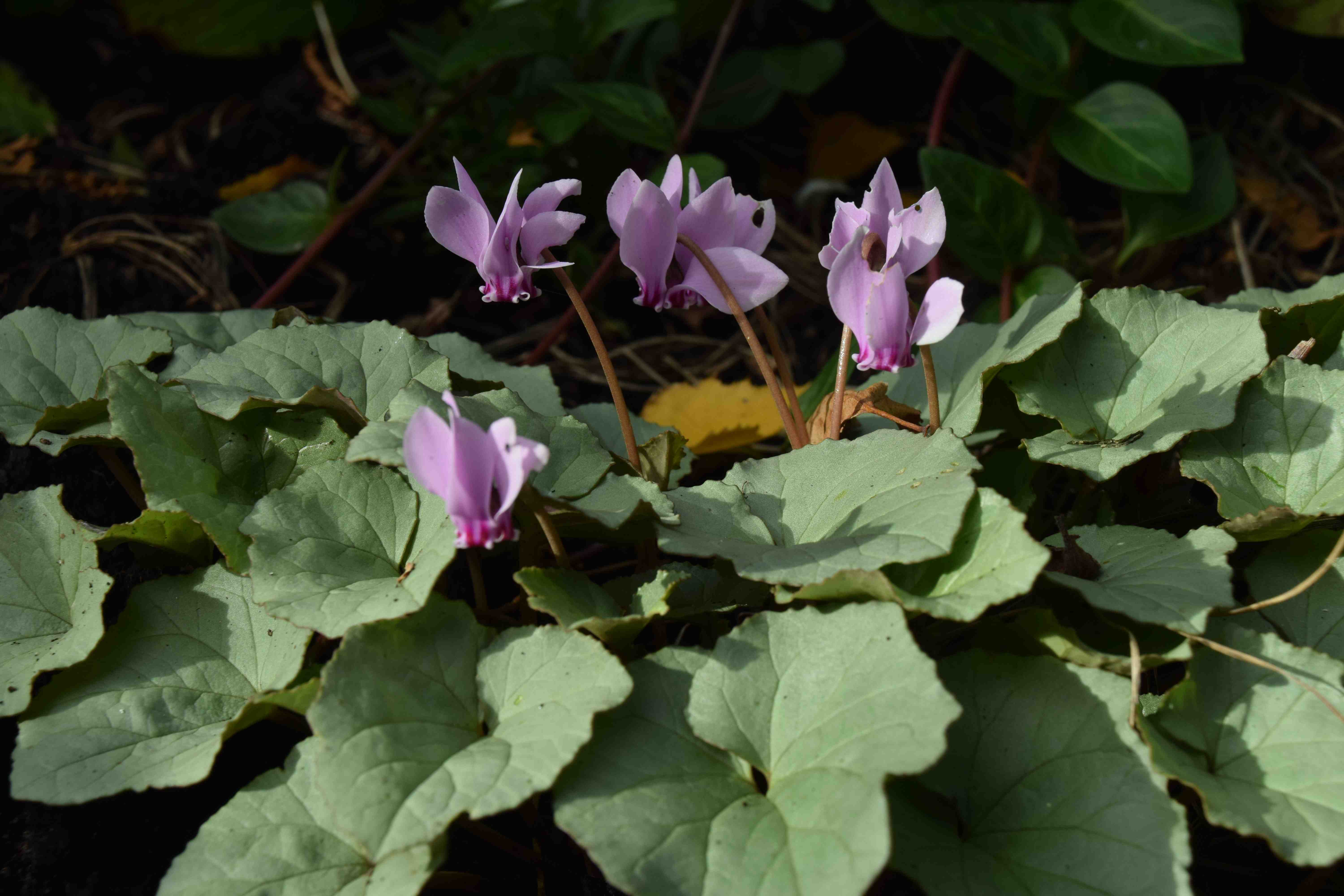
It will soon be time to think about spring and buy daffodils, tulips and crocus but, before that, there is a brief opportunity to plant autumn-flowering bulbs. These often get overlooked and the chance to plant them often passes quickly. They need to be planted this month because they bloom in September and October. They provide a welcome splash of fresh colour just as the garden is looking tired and many are easy to grow.
By far the best and most adaptable, perfect for every garden, is Cyclamen hederifolium, the common, hardy cyclamen. It looks delicate and hard to please but nothing could be further from the truth. It has a rather strange habit, blooming in August and September with flowers that spring direct from the soil, and then produces its attractive leaves. These remain throughout winter into spring and die down in April or May. The soil then remains bare until flowers pop up again in late summer. Sometimes, as in my photo above, the leaves emerge just as the last flowers open but the flowers are usually produced before the leaves unfurl.
This is a very adaptable plant and will grow in sun but is most useful in shade, under shrubs and trees. Because it is dormant in the height of summer it is unaffected by summer drought. When established it will seed around and is ideal to plant with spring bulbs and with low ground cover such as ajuga and ivy.
The flowers can be pink or white and the foliage is hugely variable. I prefer the ‘all silver’ leaves so I carefully grow on seedlings of these to transplant but a patchwork of all kinds of leaf pattern is attractive too.
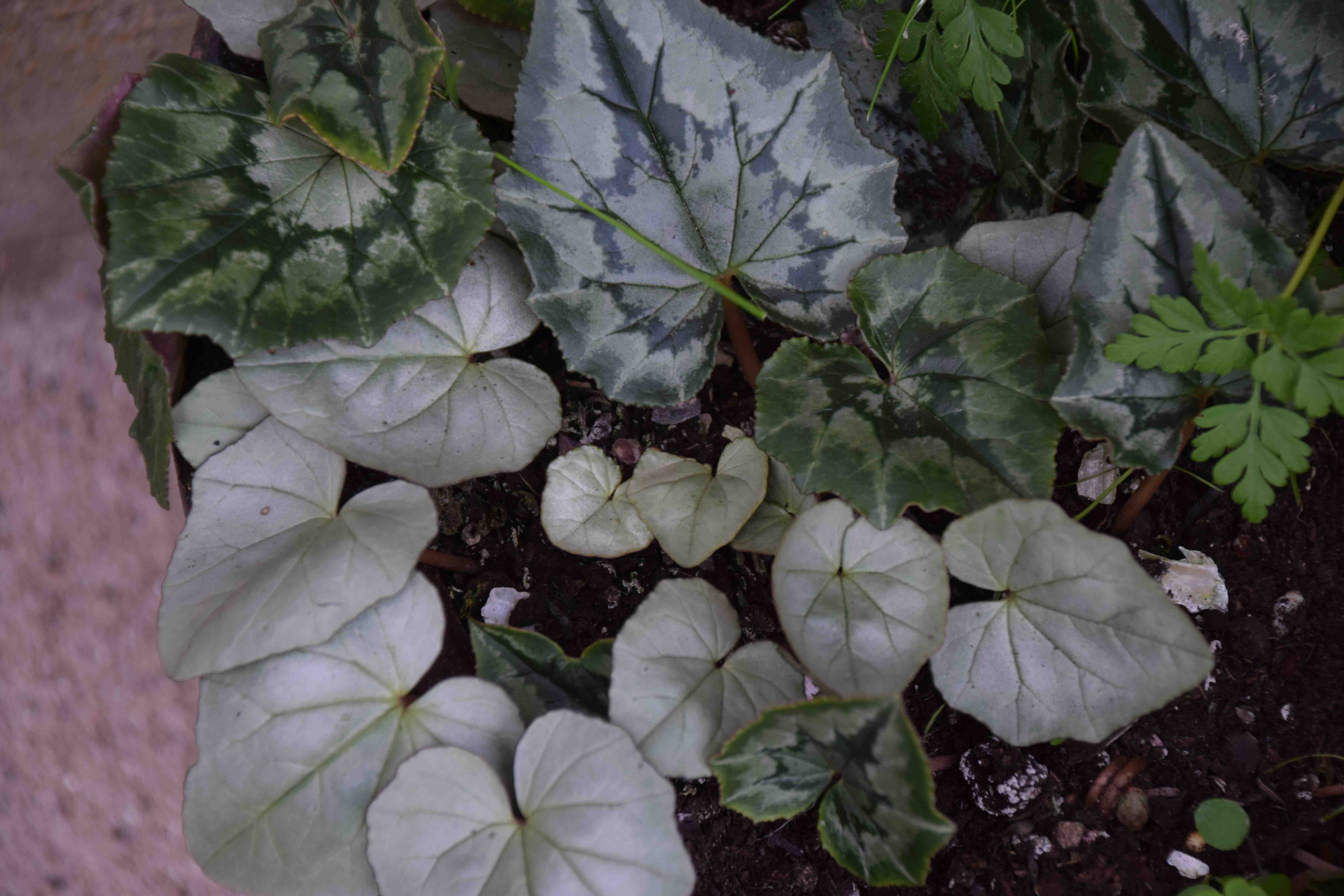
You can buy these as dried tubers in packs but it is best to buy them as growing plants in pots so you can select the leaf and flower colour. Plant the tubers about 2.5cm (1in) deep now. Do not confuse these with the more colourful and larger ‘mini-cyclamen’ that are not completely hardy and are best planted in patio pots.
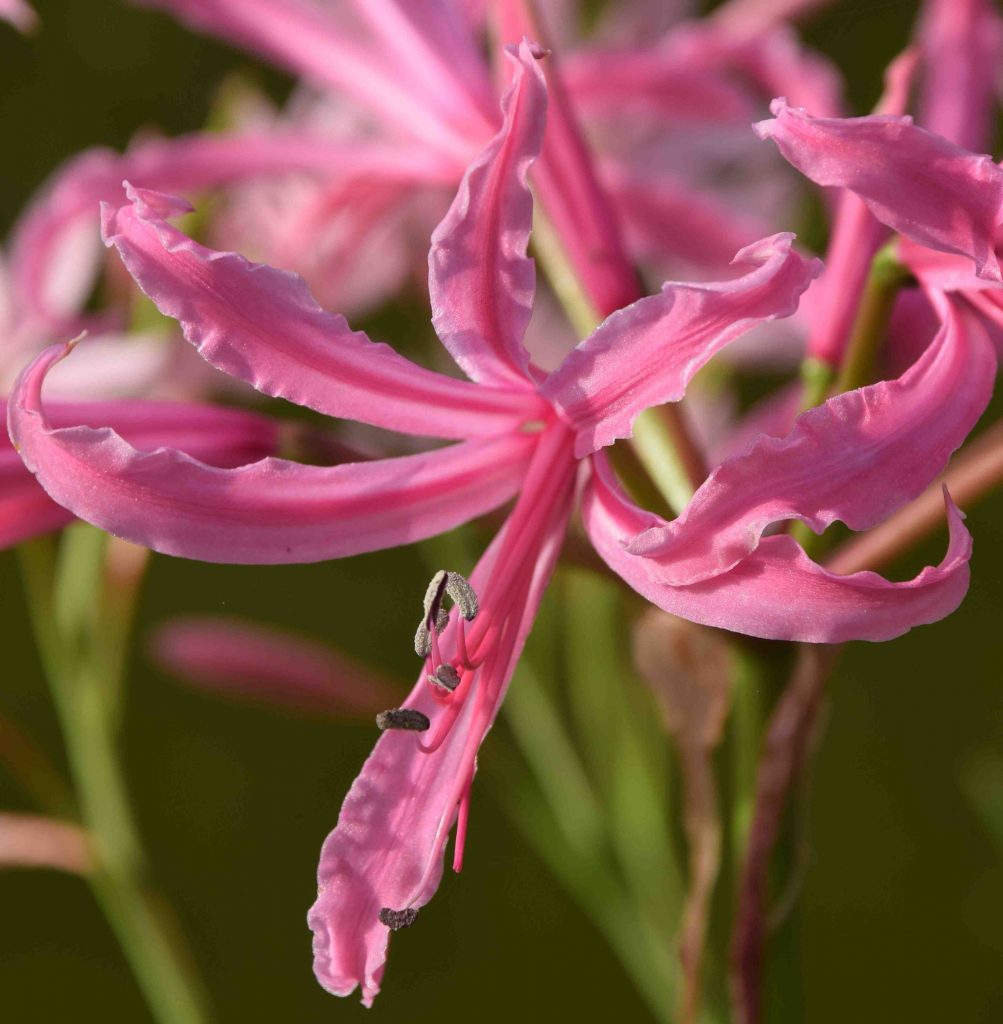
Nerines are much more showy, but need some patience. You can plant these hardy sunlovers as potted plants or dry bulbs. They should be planted with the tips of the bulbs at the soil surface and about 10cm (4in) apart in the sunniest spot you have. They usually thrive at the base of a sunny wall by the house, that bed where little else will grow. They love a summer baking and are dormant then. They hate being disturbed and take a few years to really settle down, make dense clumps of bulbs and then they don’t need any real attention for years. The foliage is bright green and strappy and the flower stems appear in September. The flowers are spidery and vibrant pink and glitter in the autumn sunshine. They are also great cut flowers.
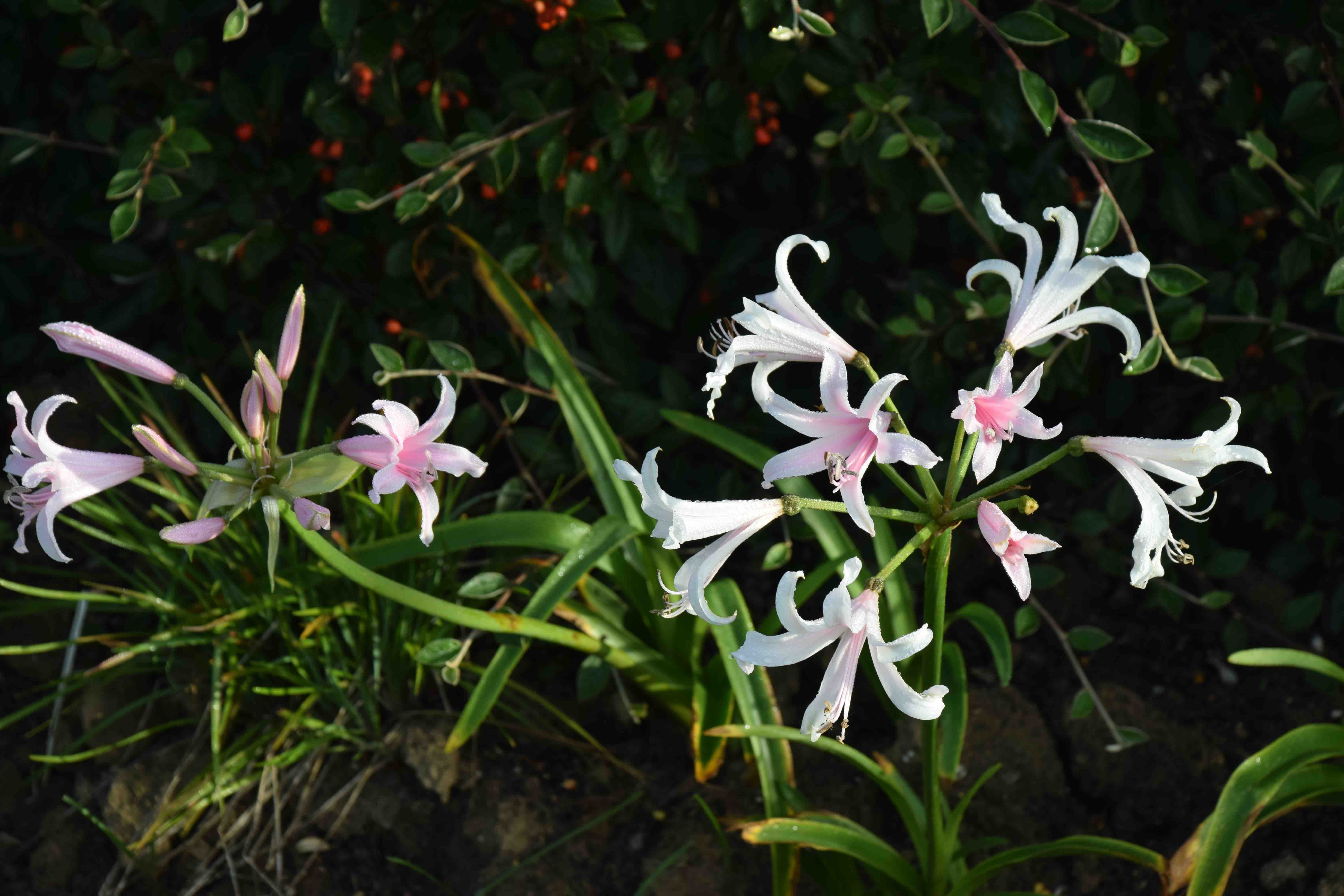
In recent years new ‘nerines’ have been bred, mainly as commercial cut flowers, that are a hybrid of nerines and the larger but less reliable hardy amaryllis. These are called Amarines. I have tried several (above) and they have been very successful in a hot, sunny border, though, like nerines, they do take a few years to settle down. `Don’t let this put you off – it is just more reason to plant them as soon as possible! They are available in all shades of pink and white and are a true delight in October.
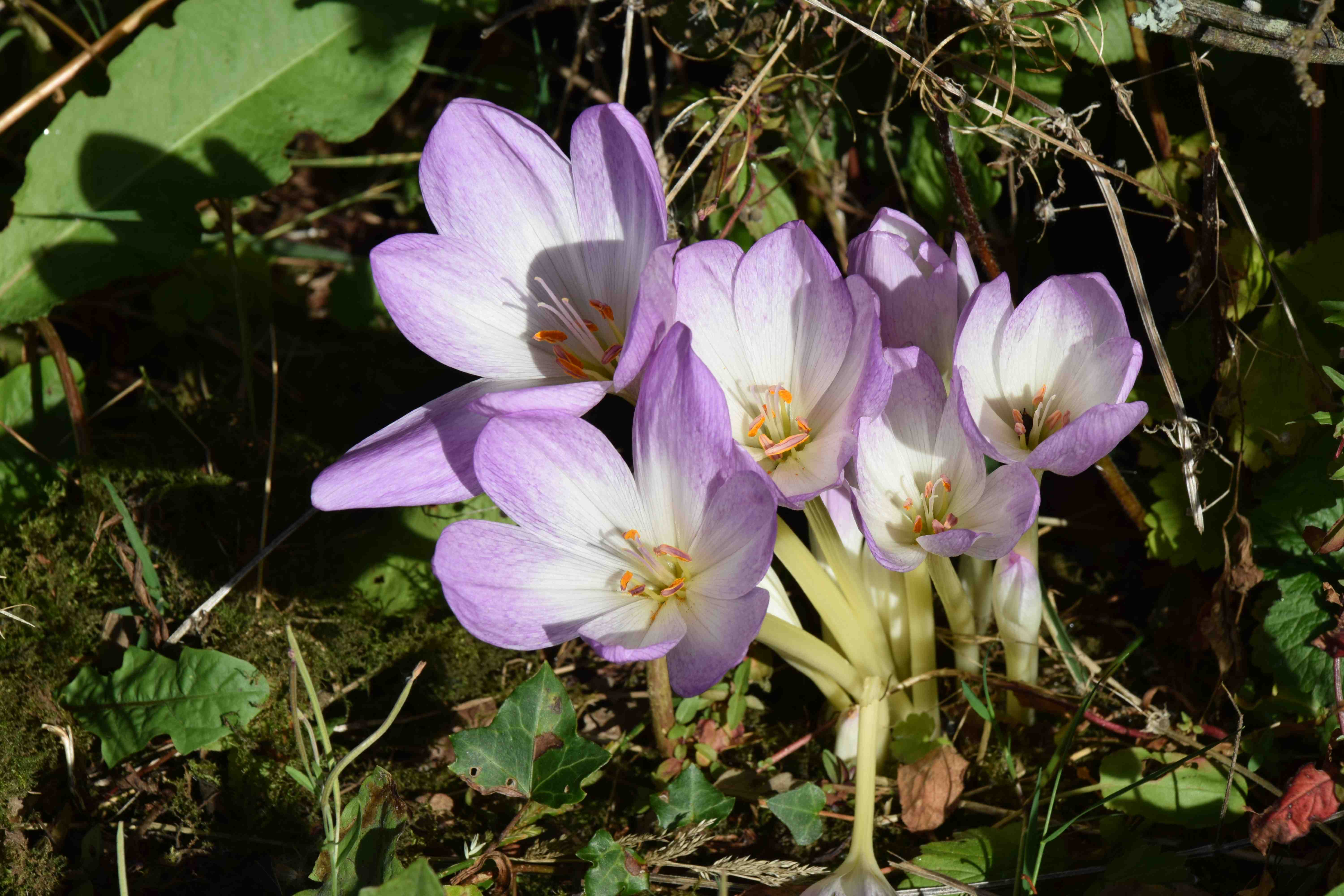
The most popular of autumn bulbs is colchicum. These, famously, bloom without being planted. You can simply put the bulb on the windowsill and it will produce its large blooms. But it is better to plant them because as soon as the flowers finish the bulbs want to grow roots and start to produce foliage. It is the leaves that are the problem with this plant. The bright flowers suggest that this would look great on a rock garden or at the front of a border but the leaves, which appear in spring, are huge and make great tufts up to 45cm (18in) high and wide on established clumps. Worse still, they turn yellow and brown in May, before disappearing underground till flowering again in September. This can look very scruffy. So plant them under shrubs, in long grass where the leaves can develop in spring or in borders where you can tolerate the foliage. I have some under peonies where I can see the flowers in autumn and the foliage is largely hidden in spring. Colchicums are sometimes called autumn crocus but this is not a good practice since they are not crocus at all and, unlike real autumn crocus which include the edible saffron, are poisonous and should never be eaten.
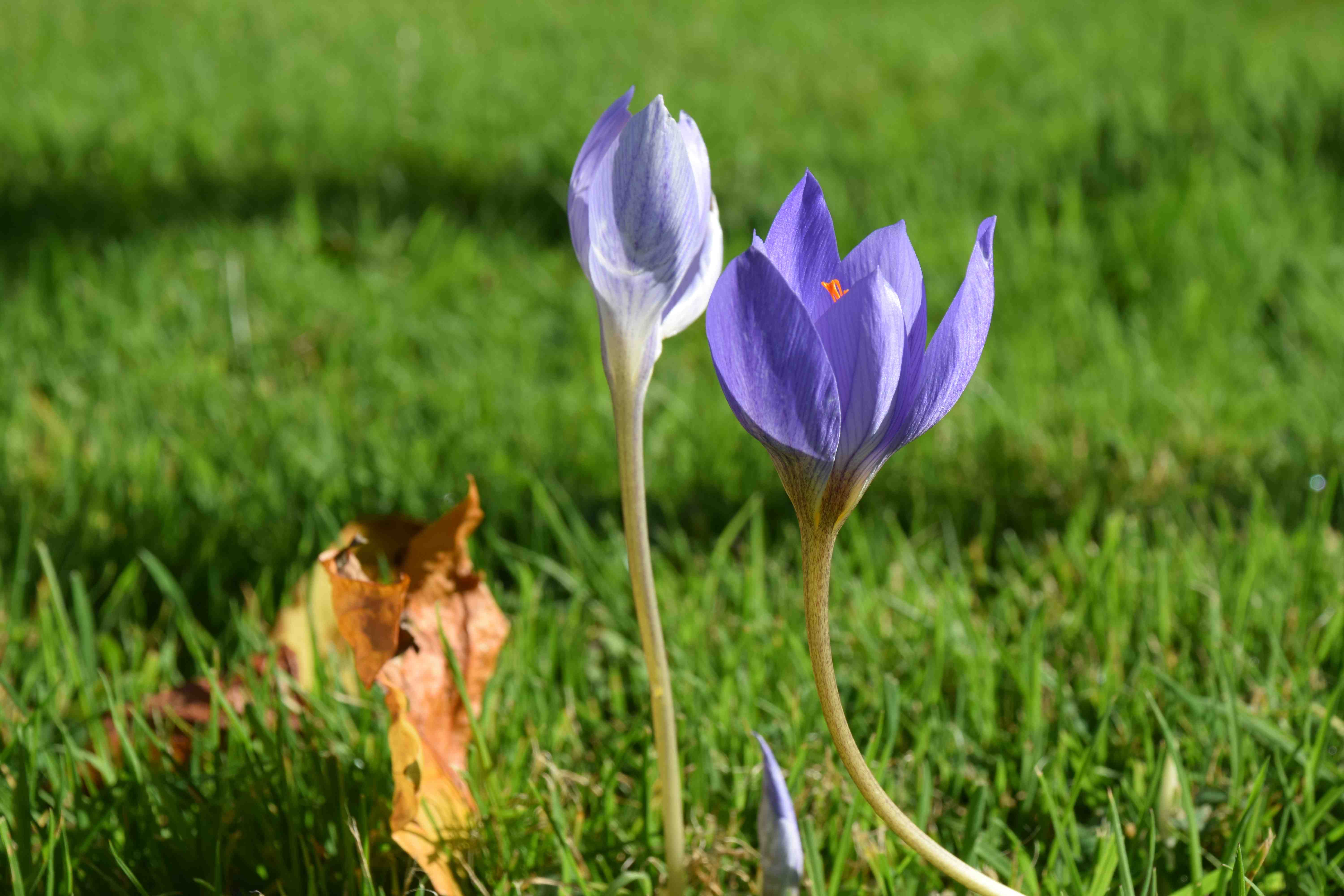
The true autumn crocus are wonderful plants for the garden. My favourite is Crocus speciosus (above) and the corms are not expensive. You can plant them in the rock garden, in borders or in grass. The flowers appear in October but the leaves grow in spring, along with regular crocus so you can plant the two types together. You just have to watch the grass carefully to avoid mowing off the flowers. They tolerate sun or part shade so are suitable for a sunny lawn or in borders under shrubs. They are at their best when they pop up among bright fallen leaves. The flowers are bigger and taller than most spring crocus and sweetly scented of honey.
The saffron crocus (Crocus sativus) is also available but is less adaptable in the garden and needs a sunny, well-drained spot to flower well. But the chance to produce your own saffron is enough to give it a try and the flowers, even if you don’t have enough to make an impact on your cooking, are pretty.
Reminders
Keep taking cuttings of pelargoniums and fuchsias
Pull up bedding plants that suffered in the summer heat and drought and compost. Collect seeds where possible for sowing next year
Summer prune apples and pears
Sow corn salad and other winter salads